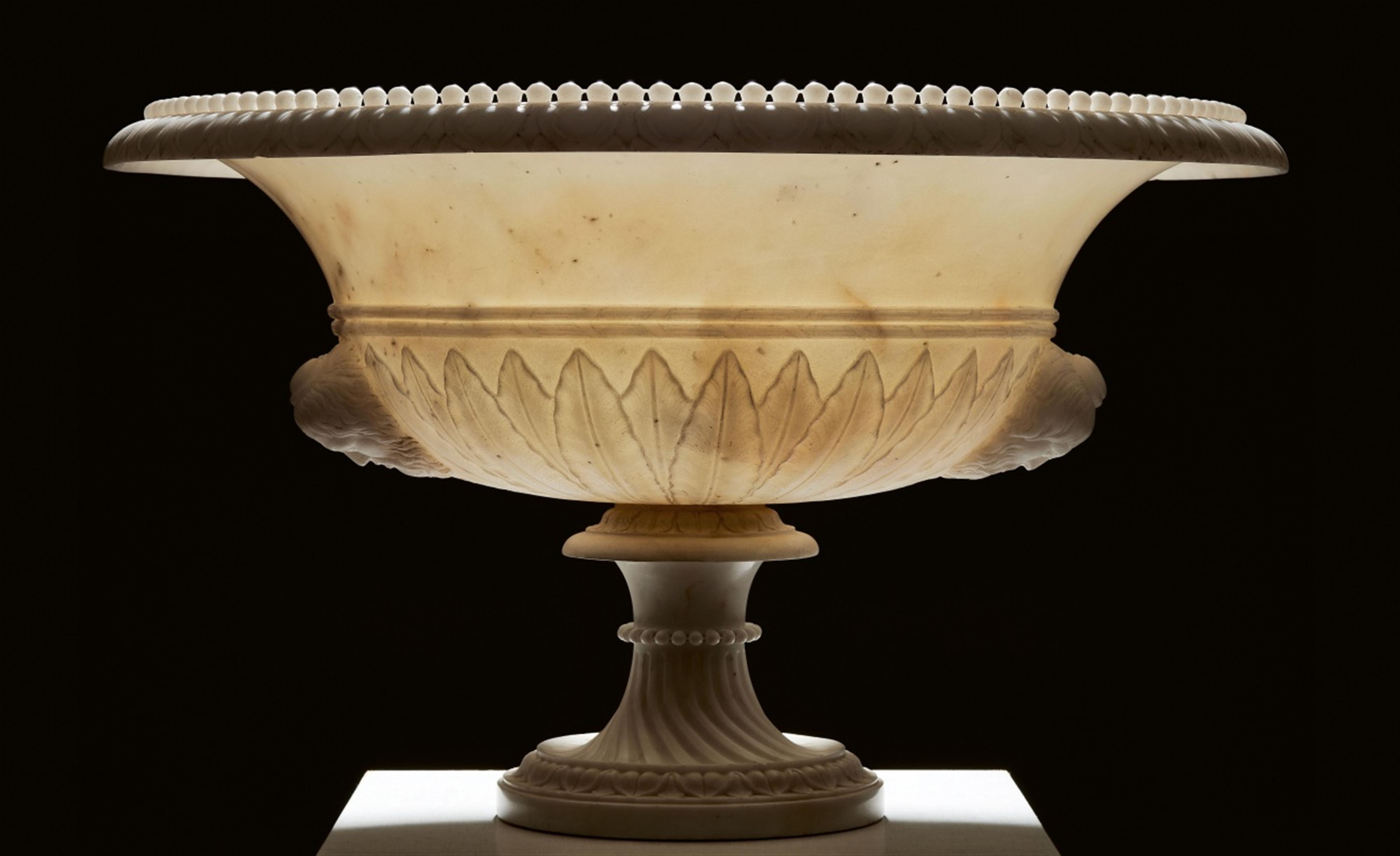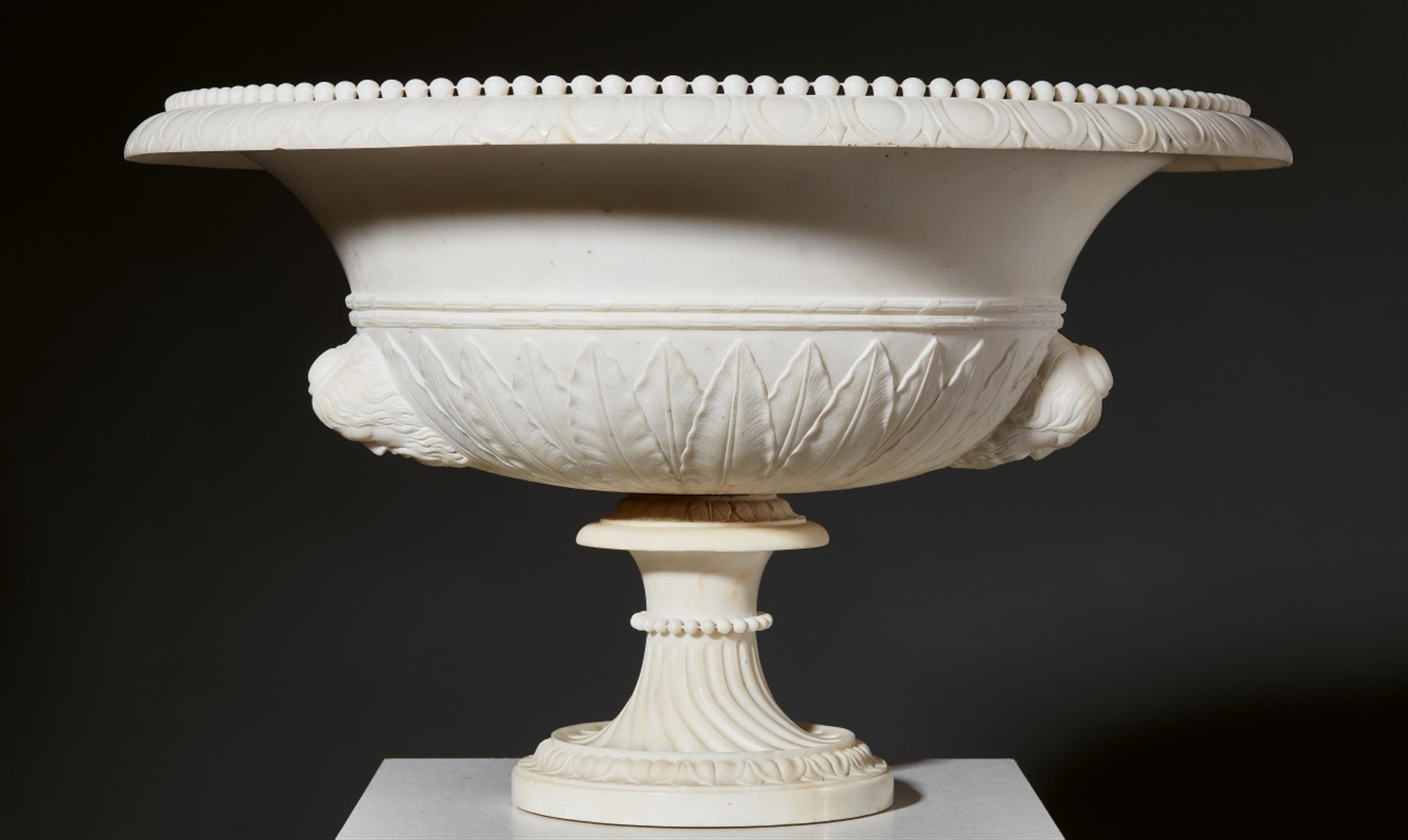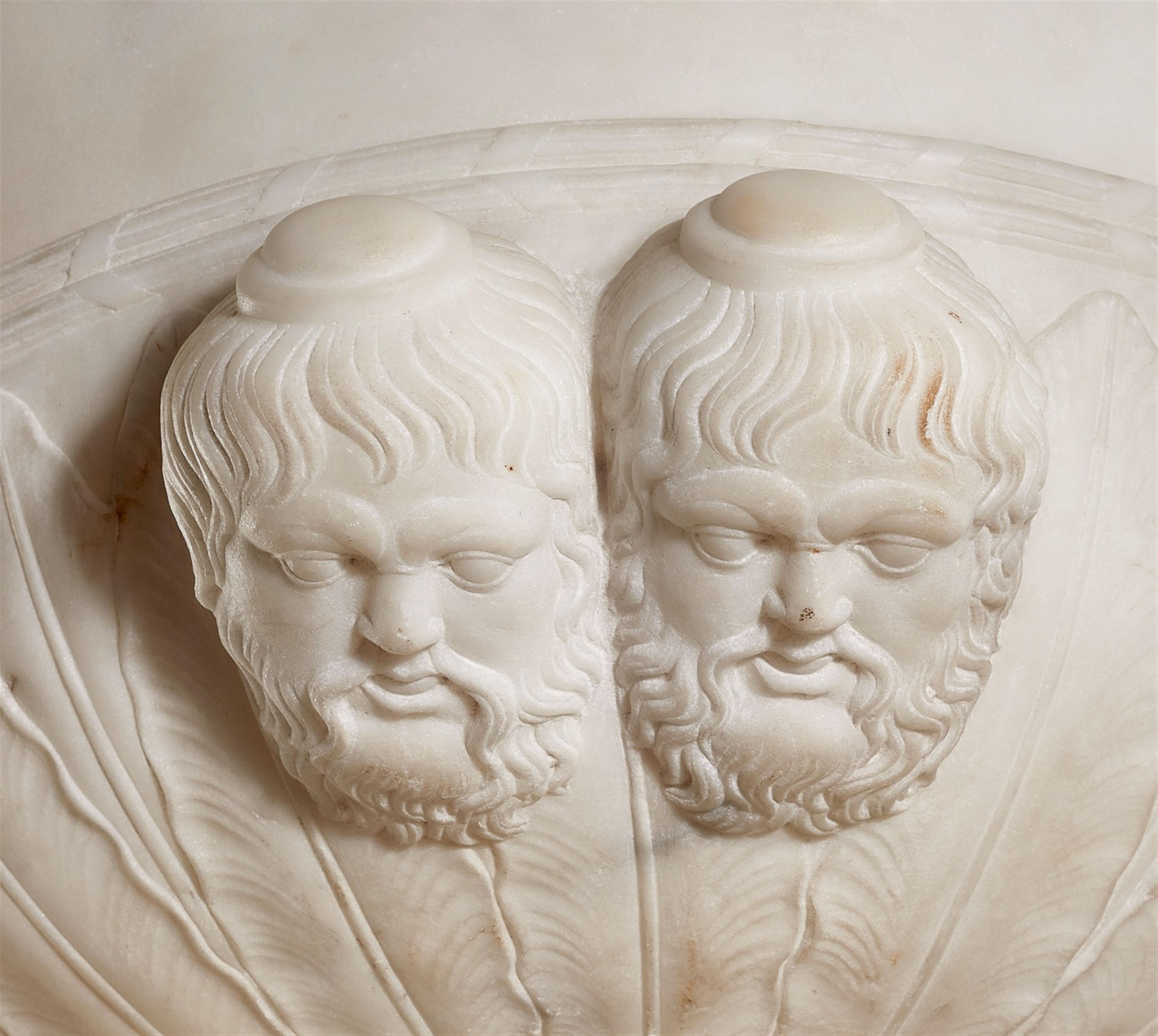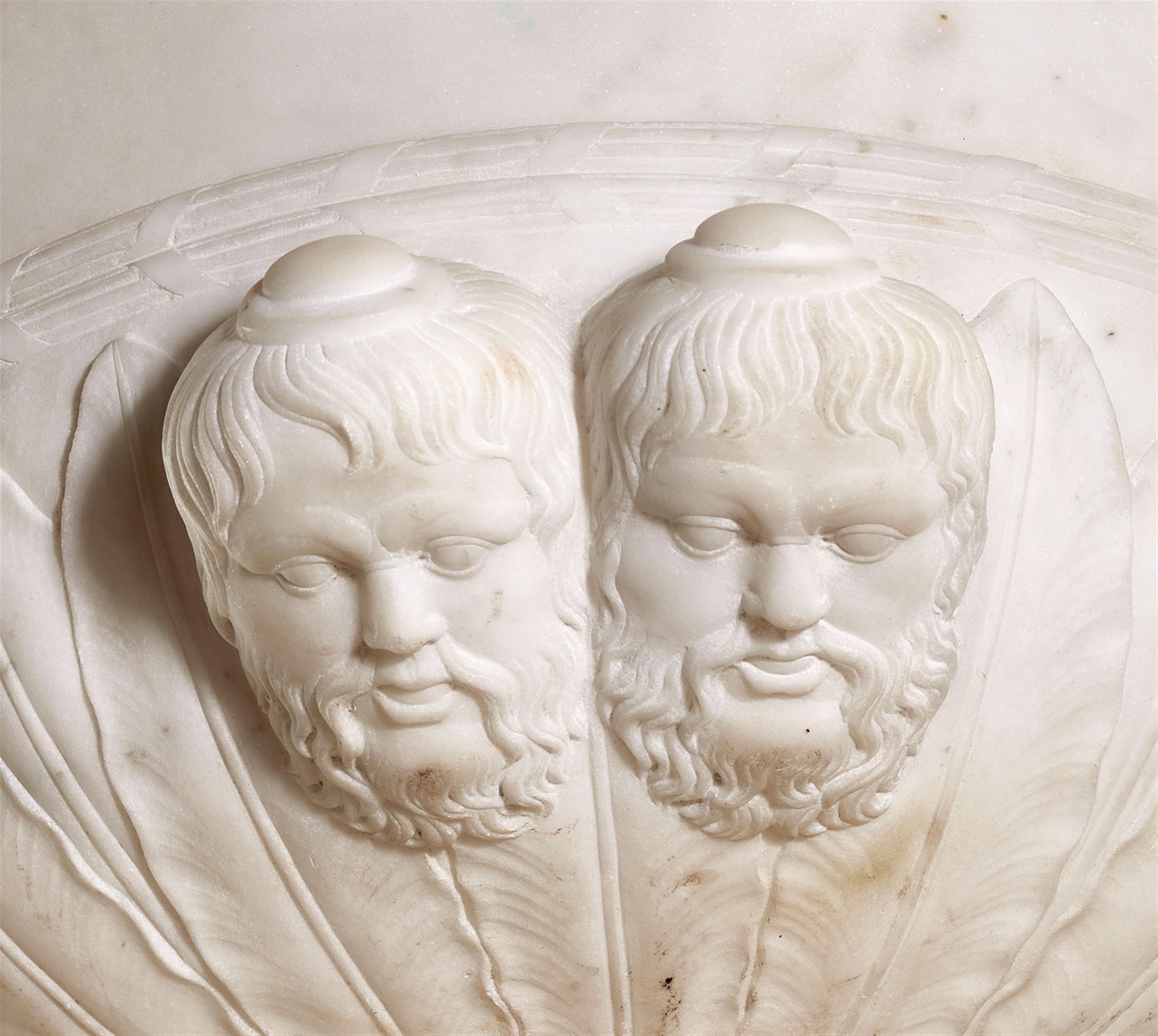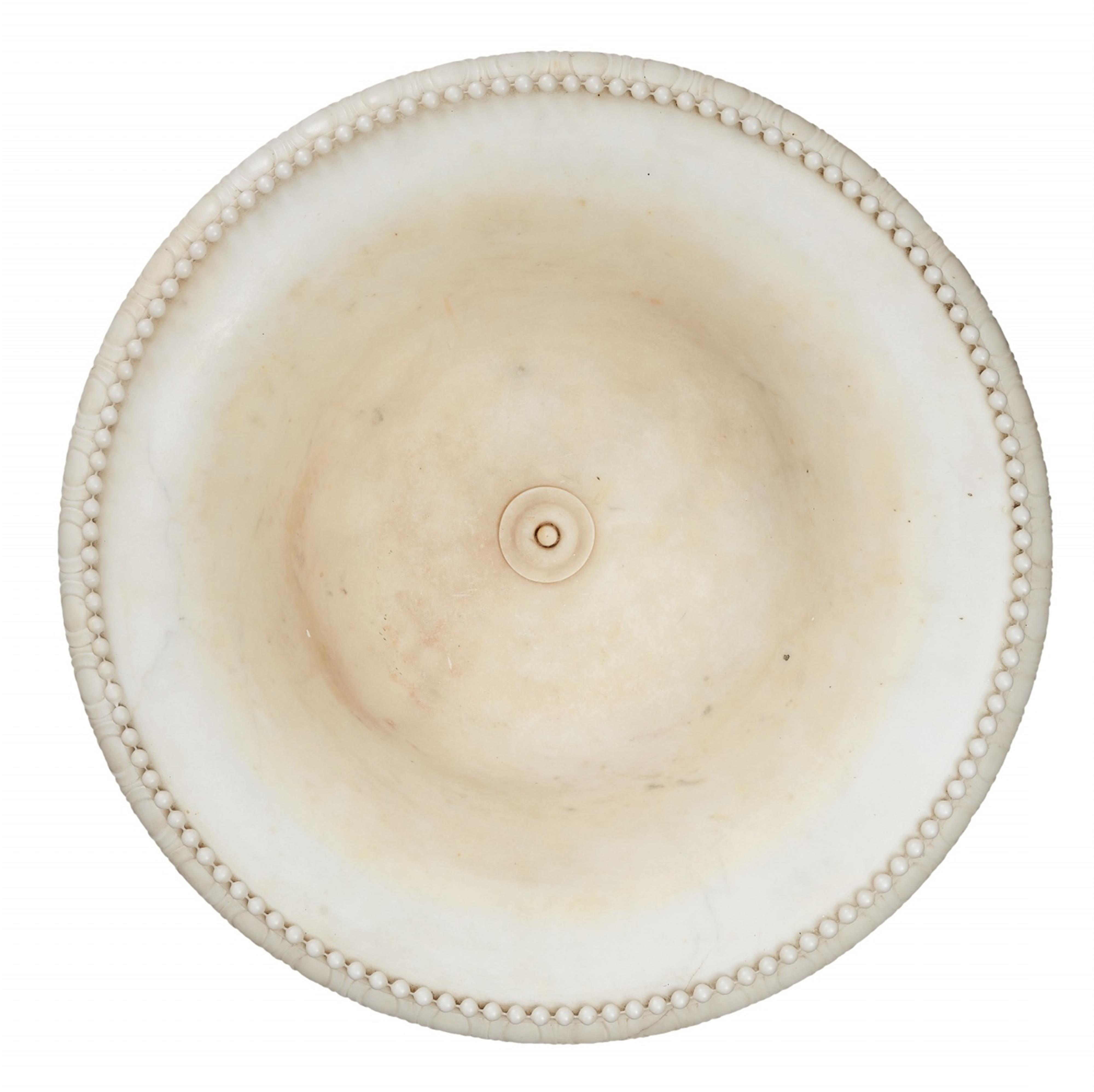An important translucent white Carrara marble vase
Thinly worked white Carrara marble. Vessel comprised of two parts: The upper section a broad cuppa with a beaded rim and two mascarons on either side, the lower section a flaring twist-fluted base. The shaft with a beaded border beneath the disc-shaped node above a laurel leaf frieze. Patinated and partially filled older crack (possibly caused during production) to the upper edge, circa 11 cm. H 41.5, D 69 cm.
Northern Italy, circa / after 1810, design tentatively attributed to Karl-Friedrich Schinkel.
Frank C. Möller discovered a very similar basin around 15 years ago, the production of which could be assigned to the studio of Christian Daniel Rauch. Rauch's account book mentions a certain Francesco Menghi who was charged with carving the piece on 15th March 1824 after a design by Karl Friedrich Schinkel. The piece consists of two parts, namely the broad bowl with its beaded rim and the twisted grapevine handles as well as the fluted base. The basin was presented at the Academy exhibition in 1826, where Prince Wilhelm purchased it and had it carried to the crown prince in December 1826. It remained in the possession of his descendants until the auction of the Welf estate in 2005.
Another very similar basin was identified by Frank Möller in the inventory of the New Pavilion. It was produced a year earlier for King Friedrich Wilhelm III. A third smaller basin was made for Rauch's daughter, Agnes von Rauch. All these vases are mentioned in Rauch's second account book and all are identified. It is assumed that there was also a first account book, which has been lost, so that we have no information about possible further royal orders based on Schinkel's designs. Like the three abovementioned pieces, this basin also diverges from the well-known prototypes of the Warwick, Medici, and Borghese vases. Versions of these famous designs in various materials had decorated the gardens and interiors of the European aristocracy since the late 17th century. In contrast to these models, the present work is designed to evoke an air of antiquity without being a direct copy. Its form departs entirely from classical models, and its bold design with a broad rim is entirely unique. The marble is also carved exceedingly thinly, with some parts measuring only 3mm in thickness.
The two masks in the lower section of the vase are the only direct historical quotations in the design. They are a reference to the calyx krater-form vessel known as the Borghese vase, which features similar heads. Frank C. Möller has suggested that the heads represent the two guard figures Gog and Magog from the London guildhall. He assigns the basin to Schinkel's early period, dating it to around 1810, and does not rule out that it was sent as part of the Italian delivery containing the sarcophagus of Queen Luise.
The history of the sarcophagus' delivery was an adventurous one, as the ship in which Rauch personally transported the finished object was captured. An English boat was able to regain the cargo and it finally arrived, damaged by salt water, in Charlottenburg in the spring of 1815. Unfortunately, it cannot be proven indefinitely that the basin was included in this particular order. All that is known for certain is that it originates from English aristocratic ownership. A cousin of Queen Luise, Queen Charlotte - née Duchess Sophie Charlotte von Mecklenburg - became Queen of England in 1761 and who may have ordered or received this bowl as a gift. She lived temporarily in Kew Place, where there is an enchanting garden with the most beautiful flowerpots. The basin presented here shows signs of use, which could indicate that it was used there.
Another possible former owner could be William George Spencer Cavendish, 6th Duke of Devonshire (1790 - 1858), who was also a great lover of gardening and had many such vases and tazze in his possession.
Provenance
English aristocratic ownership.
Literature
Cf. a design for a stembowl by Karl Friedrich Schinkel with a similarly broad cuppa (so-called Beuth-Dish) in cat.: Karl Friedrich Schinkel. Geschichte und Poesie, Berlin-Munich 2012, cat. 173, illus. 3.

